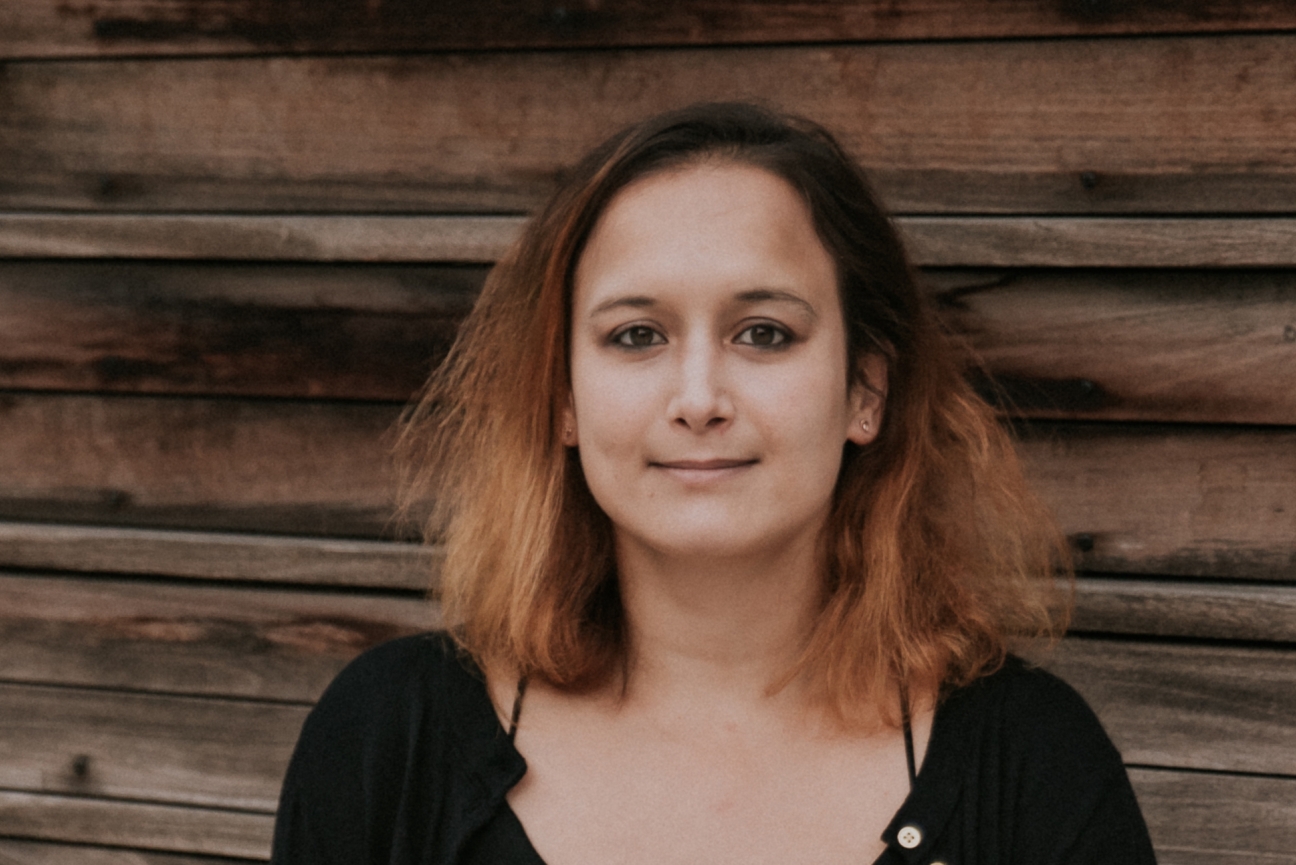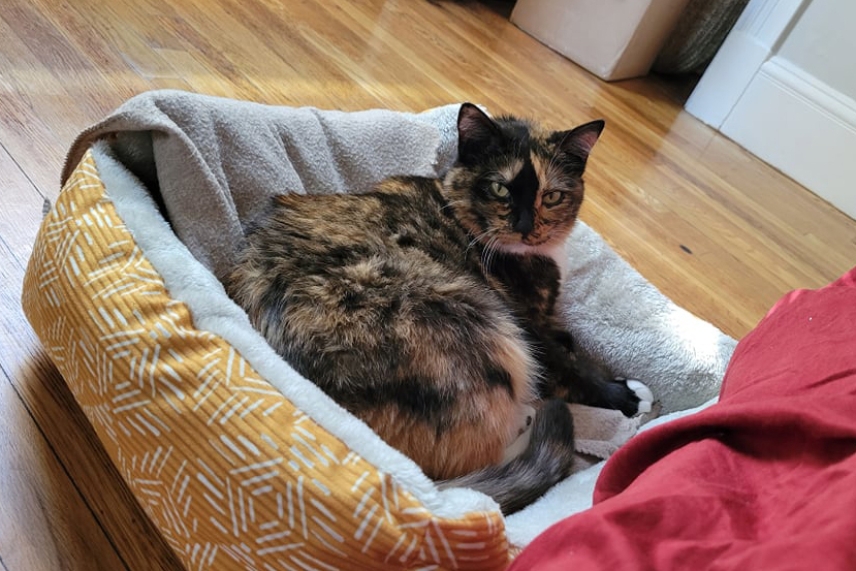
Marine Krzisch
Courtesy of Marine Krzisch
Meet a Whitehead Postdoc: Marine Krzisch
Marine Krzisch is a postdoc in Whitehead Institute Founding Member Rudolf Jaenisch’s lab who works on making better models with which to study neurological diseases. We sat down with Marine to learn more about her and her experiences in and out of the lab.
What are you investigating?
I'm trying to better model human neurological disease. I'm working on three diseases, Fragile X syndrome, which can cause intellectual disability, and the neurodegenerative diseases Alzheimer’s and Parkinson's. We don’t have a cure for any of these yet, and that’s mainly due to the fact that animal models don’t exactly reproduce the disease: the disease does not progress in animals the same way it does in humans. Also, some neurological traits or changes are hard to assess in animals. What we do is we try to make different types of brain cells from what we call induced pluripotent stem cells, which are cells derived from the skin of patients. We take a bit of skin from a patient with the disease of interest, transform it into a stem cell, and then we can transform the stem cell into neurons, microglia, astrocytes, and use those to study the disease. Some people in the lab grow those cells in a dish, or in little organoids, which are assemblies of cells like a mini-brain. However, these models still don’t fully reproduce the function and the morphology of the cells in the human brain. For my work, we transplant the cells into the brains of mice. Some studies have shown that this allows the cells to develop morphology, function, and gene expression that is closer to what you would see in the human brain, so it might give us a more accurate model of the diseases.
What led you to a research career and in particular, to work on disease modeling?
My father is a doctor, and when I was growing up in the nineties, he had a lot of patients die of cancer because at the time cancer was not as treatable; there just weren’t any cures to keep patients from dying. Now, we have more options, like immunotherapy and more targeted treatments like tyrosine kinase inhibitors, but there are still a lot of diseases, including some cancers, that don’t have cures yet. Learning that, and seeing it with my father’s patients, pushed me to pursue research and disease modeling. I wanted to help develop cures. Also, I went into research instead of medicine because I didn’t want to work with patients directly. I actually considered becoming a veterinarian for a while, to work with animals. Then I learned that even animals have a lot of diseases without good treatments, and the best advances are all coming from human disease research, so that was another factor in my going into this line of research at first. I ultimately chose neuroscience because two people in my family developed psychiatric diseases.
What did you want to be as a little kid?
The very first thing I wanted to be, before a veterinarian, was a firefighter. I wanted to save people. It seemed like an exciting job when I was six. Ambulance drivers, firefighters, and police were cool.
What’s the biggest disaster you’ve ever had in the lab?
The biggest one I remember was having the minus 80 freezer break down at 3 AM or something like that—I used to work at night a lot—and I had to transfer everything. I couldn't find another freezer at first, so that was a bit stressful to deal with in the middle of the night.
What are your hobbies?
I do amateur boxing. I've always been into martial arts, that’s what I do outside of work. I started studying martial arts when I was 15. I did karate, but I always wanted to learn to fight and that was more gymnastics than fighting. When I started my PhD, my schedule was flexible enough that I could really start training for competition. I started doing Sanda, which is the fighting aspect of Wushu. It's very Kungfu. However, I was in Switzerland, so there were not so many female competitors, and my coach at that time was a former pro kickboxer so he put me in kickboxing. Then when we came to the US, I couldn’t find a good kickboxing gym so I switched to amateur boxing. I’m pretty sporty; I also run a lot and lift weights. Then I also do a bit of environmental activism. I write letters to the editor for 350.org, which is an arm of an activism association against global warming.
How did you get involved in climate activism?
I got involved around 2017. I was constantly reading more and more alarming reports on global warming in journals like Nature and Science. Then Trump announced that he was pulling out of the Paris agreements. I decided I wanted to do something. At that year’s Annual Retreat of the Whitehead Institute, one of the labs had a poster about global warming. I asked them about different organizations that I could get involved with. I wanted to join an organization that was rational and pro-science, and I think 350 was one that they mentioned. 350 is really a good match for me because it pushes for change based on good science and not simply emotions, so I joined and then started writing letters to the editor. I’m also involved in their science group, which works on outreach on the science of global warming. I mostly write for them because I’m on a visa, so if I protest and get arrested, that could get really bad for me.
Do you have any pets?
My parents used to have horses, so I had a horse at home, and many dogs. Now, I have a pet through my boyfriend, a five-year-old cat named Kiara. She’s super cute.

Kiara
Courtesy of Marine Krzisch
Do you collect anything?
I collect animals from these surprise eggs called Yowie. They are chocolate eggs with plastic endangered animals inside of them. Maybe the collection is a little depressing, but I always buy the eggs because they give funds for conservation, so it’s like I can do a good action by eating them. Also, I love chocolate.
What animals are in your collection?
I just checked, and I have the brown sea cucumber, sunflower sea star, axolotl, Atlantic wolffish, cape seahorse, Saimaa ringed seal, Tasmanian giant freshwater crayfish, cheetah, guanaco, Irrawaddy dolphin, Madagascar day gecko, white-lipped peccary, African elephant, whale shark, and big eye tuna.
What’s your favorite meal to cook or eat?
I like to cook, and my favorite dish to cook, because I’m French, is crepes. They are easy to make and everyone likes them—they are also my favorite dish to eat. I’ll make savory crepes, like egg, ham, and cheese, and sweet crepes, like with chestnut cream. I’m also expected to make them by my friends at this point, because that’s what I do when I invite people over: make crepes.
Where do you see yourself in ten years?
I'd like to be a principal investigator, either in academia or industry, and to have my own team making significant discoveries that will help lead to therapies. I'm very therapy oriented. One of the things I find most exciting about the induced pluripotent stem cell field is that I think it's one of the most promising models to discover new drugs.
Contact
Communications and Public Affairs
Phone: 617-452-4630
Email: newsroom@wi.mit.edu


